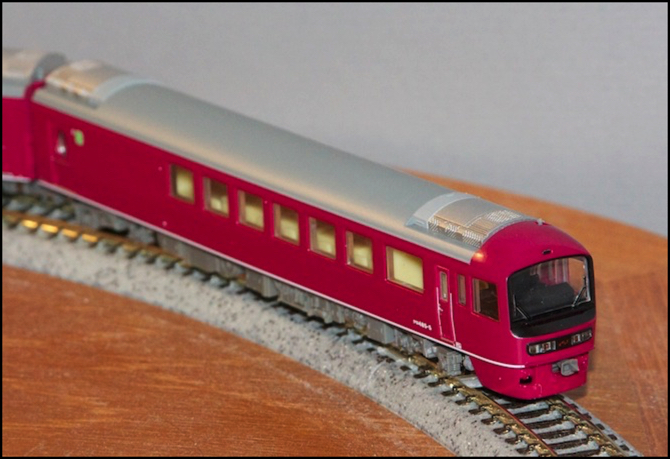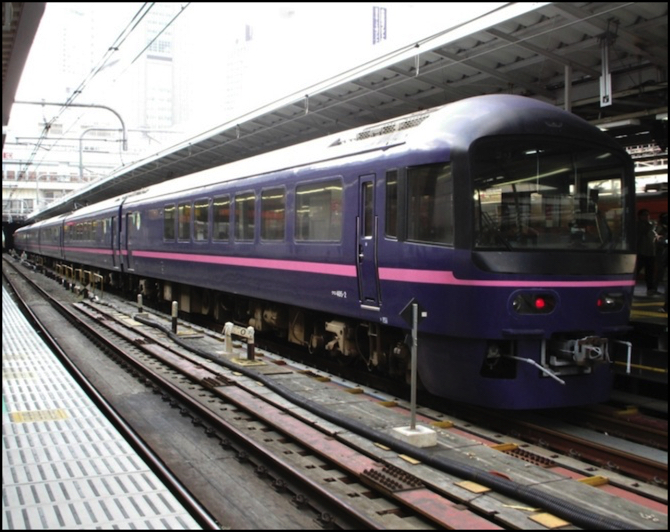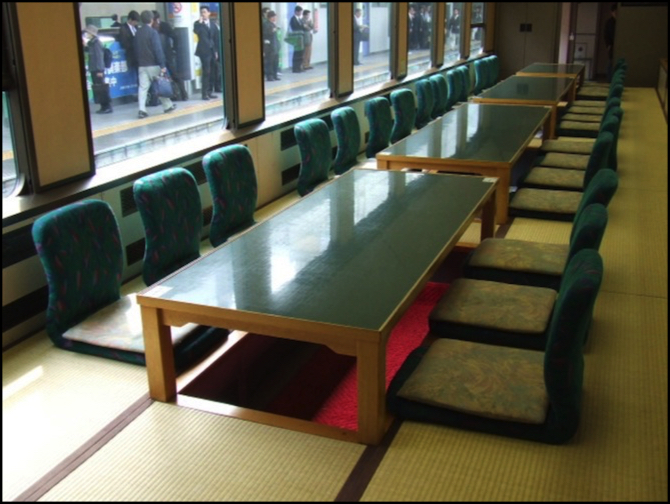The Joy of Trains
20 May 2011 02:04 Filed in: Model Trains,Prototype

Back in October when I wrote about Joyful Trains I mentioned Micro Ace was coming out with models of three of them, and I’d placed reservations. Well, they finally arrived, and that’s given me reason to write about them. As I write this, Hobby Search still has two of these in stock, although the Hana has already sold out.
What’s a “Joyful Train” you ask? The name sounds a bit odd to English-speakers, but it’s an example of the evocative, rather than literal, use of English words by the Japanese. In this case to suggest that the trains are associated with happy times. A Joyful Train is a train dedicated to charters and similar uses, often to take groups of employees to resort areas for company-sponsored social events.
There is a bit of overlap with the limited express trains, which also have distinctive appearances, and often operate to resort areas. However, those operate on regular schedules, and there may be several trains of the same design used interchangeably. Joyful trains are unique; although there are similarities among some of them, each design is distinctive.
A Joyful Train is typically constructed from an existing surplus train or set of cars, which can be an EMU (an Electric Multiple-Unit passenger train), DMU (a Diesel Multiple-Unit passenger train), or locomotive-hauled passenger coaches. Customization generally involves completely replacing the interior, and often the windows, as well as restructuring the ends to make it look different from the original vehicle. The 485 Series has been widely used as the basis for such conversions, as its ability to operate on all types of electrical systems used on narrow-gauge lines in Japan (AC or DC, and both 50 and 60 Hz), as well as to be hauled by a locomotive, make it suitable for use anywhere a charter is desired.

The prototype “Hana” at Tokyo’s Shinjuku Station (2006) - Photographer: Rsa
The three models Micro Ace re-released are all similar 485-based trains: the six-car Hana, and the 4-car Yamanami and Seseragi. All of these are “Tatami-mat” designs, where the interior replicates a traditional Japanese residence or inn, with woven mats laid on a wooden floor.

Hana

Yamanami

Seseragi
The Micro Ace models come equipped with Rapido couplers, but these can be replaced with Micro Ace’s F0002 gray “close coupler”, which replicates the Shibata coupler (often mistakenly called a “Scharfenberg” after the original close-coupler design) used on Japanese narrow-gauge EMUs. The trains are also compatible with the “narrow” style of LED interior lights (G0005/G0006/G0007/G0008).
Because the trains are intended for recreational use, rather than simply travel, one of the cars is typically outfitted as a dining car, with a design in keeping with the rest of the train. For example, the dining car of the Yamanami has a typical low table designed for diners who are seated on the floor. Large windows are also a typical feature, due to the scenic nature of the areas they often operate through.

Yamanami Dining Car - Photographer: Lover of Romance
Similar to the tatami-mat trains, there are also some with a carpeted floor and a more western style of furnishings.
Not all Joyful Trains are quite this extreme. I recently picked up the Kato model (10-306) of the Super Express Rainbow (Japanese wikipedia), a locomotive-hauled Joyful Train which was equipped with compartments and more ordinary seating (called a “seating” or “car seat” train), divided into normal coach class and reserved “green” cars, albeit with seats that could be rotated in a full circle. The compartments had raised floors and shoe cabinets by the door, so it was a bit outside the usual train design. The train was used from 1987 to 2001 and according to the wikipedia article linked above, it was designed to target “the young and mostly skiers”. It also had an “observation deck” at the end, with a wiper and defroster, so it may have been used to carry skiers to mountain resorts, although that isn’t clear from the description.
In addition to the train, I also bought Kato’s model of EF 65-1019 (and I already had EF65-1118)

Super Express Rainbow with EF65 #1019
Although Limited Express trains already add a splash of variety to the Japanese passenger train scene, the Joyful trains are even more distinctive, and because they are used for charters, one is appropriate almost anywhere.
Other website changes:
- Added photos to the Roster photo album, and updated the Roster and Reservations pages to reflect the new arrivals.
- Added a new Joyful Trains roster detail page as well.




